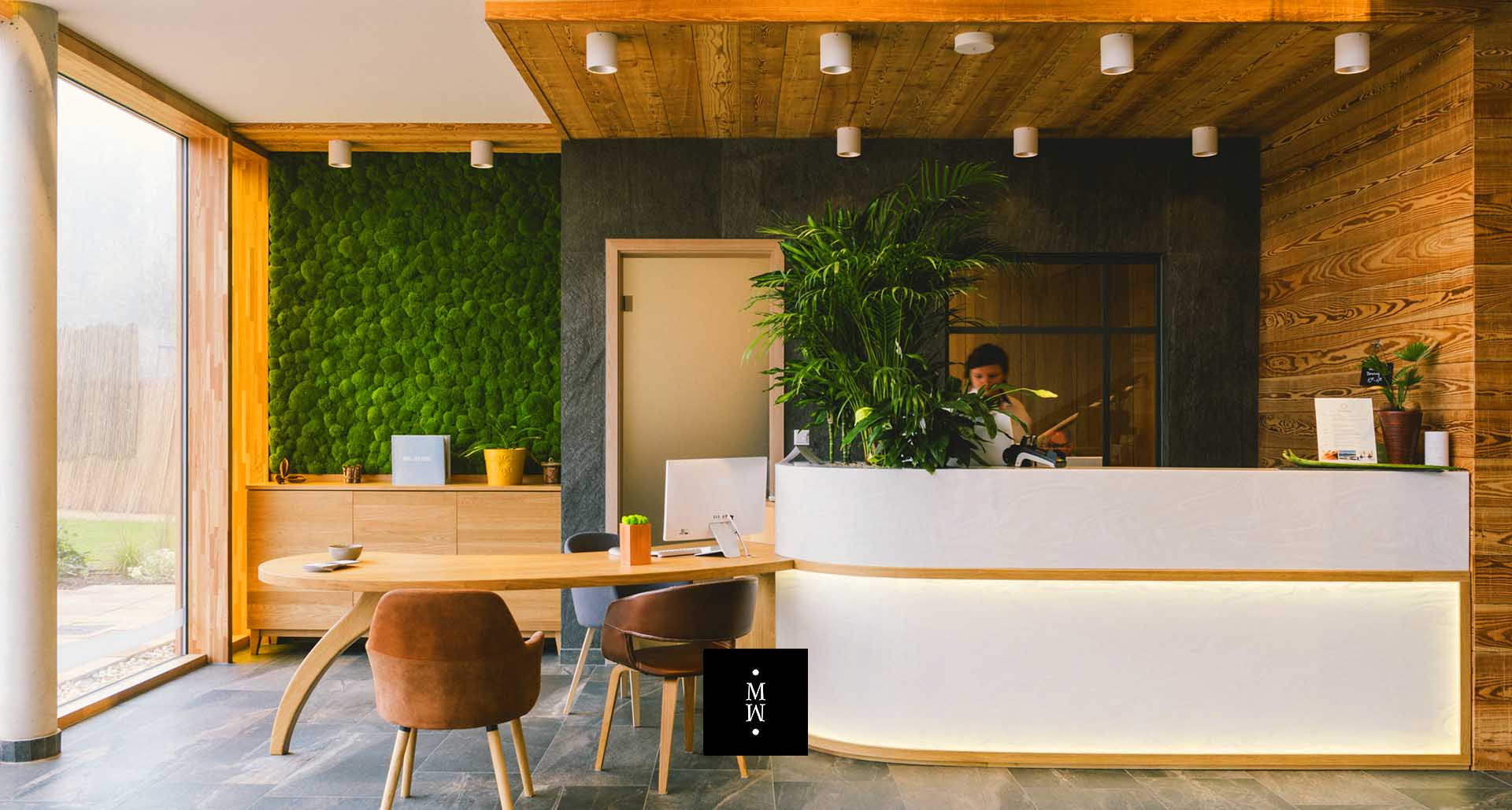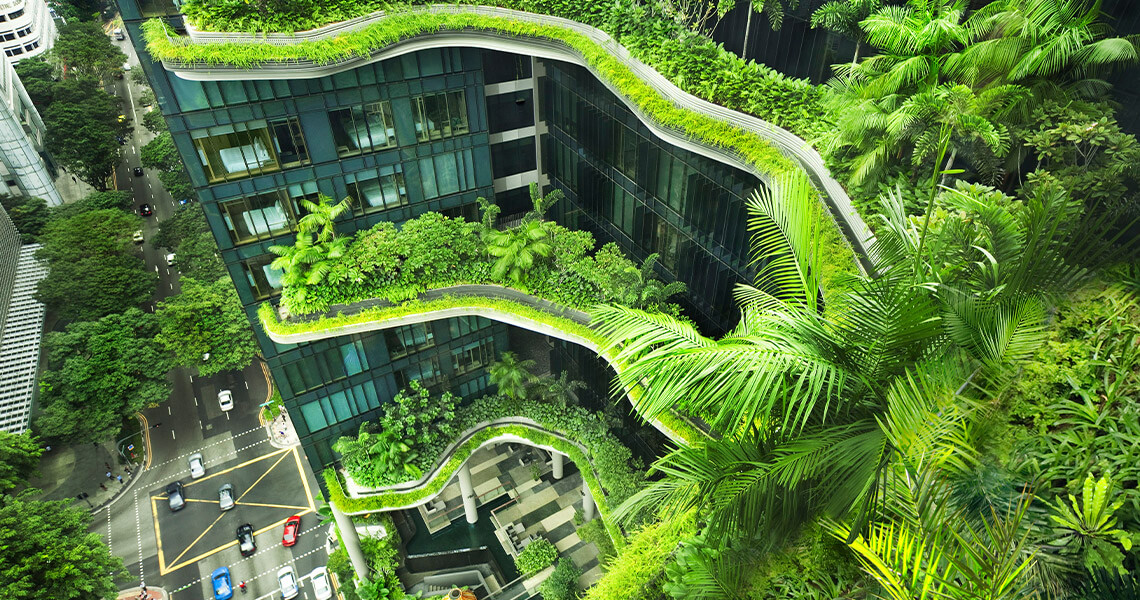
Biophilic Design
Taller skyscrapers, brighter neon signs, wider highways, even faster cars and data connections – even more stress. Our lives in the metropolises are always and constantly clocked, timed and almost non-stop. In addition, concrete-gray coolness and asphalt uniformity prevail around us.
GREEN OASES FOR EYES & SOUL
Away from any nature, we long for it! Rest, relaxation and serenity are missing for the modern, urban working man. Tours to the Alps, hiking with alpacas, adventure vacations in the forest or short day trips along rivers or lakes: city dwellers take almost every opportunity to relax in the countryside. An understandable human reaction, but the result and the recovery then quickly fizzle out again in everyday life.
The biophilic or biophilic design was developed to also bring long-term recovery and more peace to everyday life.
“Biophilia” describes our – innate – affection for the living. It has been proven many times over that nature is good for us: When we look outside into the greenery, we recover more quickly, and “forest bathing”, for example, has been proven to lower our stress level.
In today’s world, however, we have often lost touch with nature. We live and work in office towers in the middle of asphalt deserts.
Biophilic Design wants to counter this, to bring nature into our interiors and cities. It is a concept with which a natural and natural environment can be created around us. The concept is not new: just think of the Hanging Gardens of Babylon, one of the Seven Wonders of the Ancient World.
The term itself was developed by Stephen R. Kellert and colleagues, based on the description of “biophilia” by social psychologist Erich Fromm.
14 Patterns from Biophilic Design
So how do we bring nature into our offices and our cities? One thing in advance: putting two potted plants on the desk is not enough. The consulting firm Terrapin Bright Green has defined the “14 Patterns of Biophilic Design” that further define the concept. They say:





